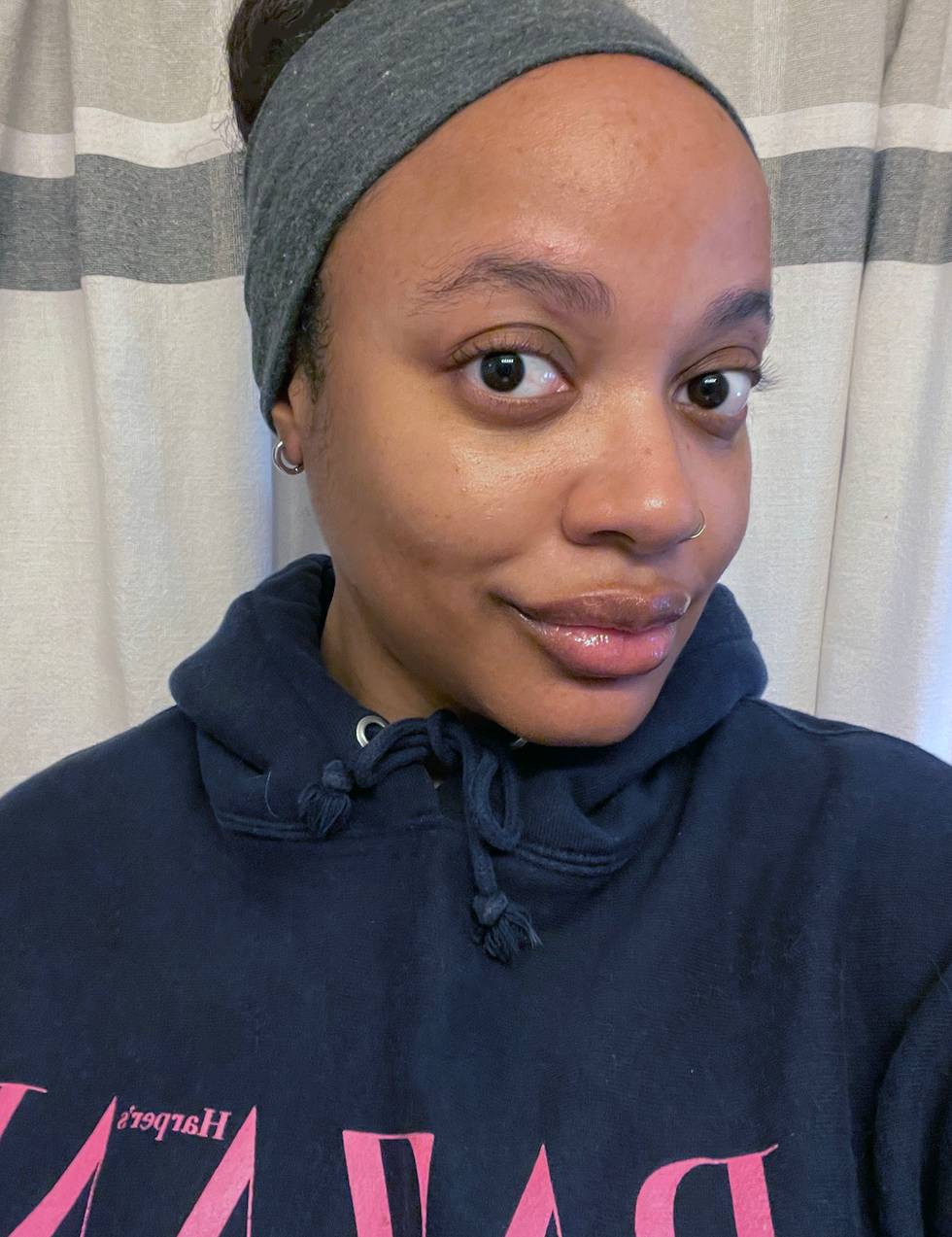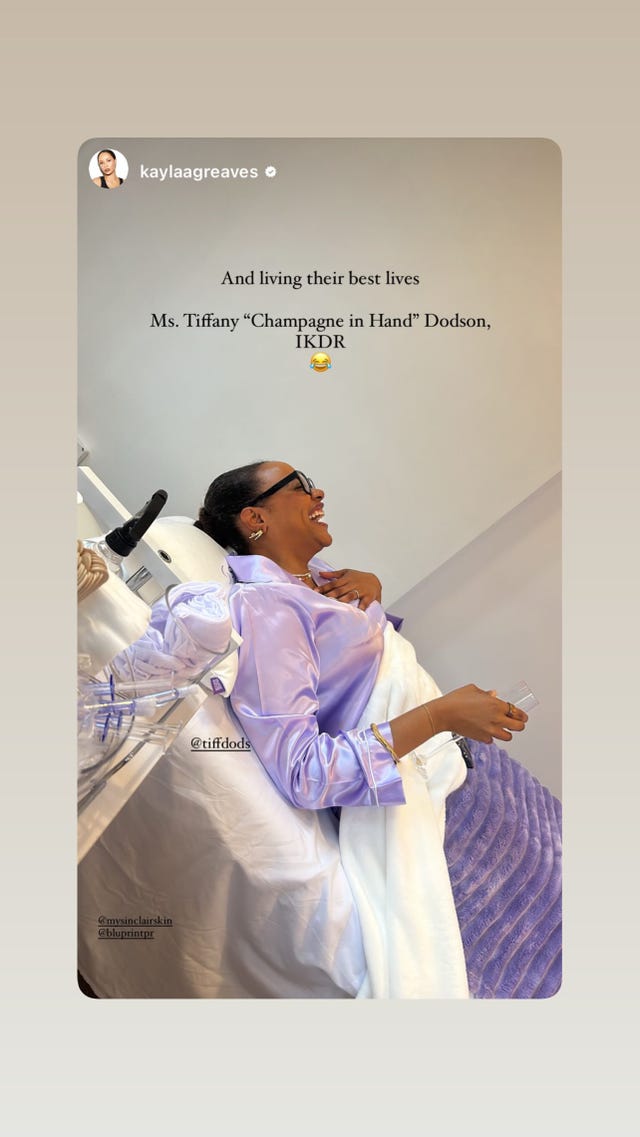From copper peptides and LED masks to antioxidant-rich meals and spa-grade facials, biohacking isn’t just for Silicon Valley CEOs. One beauty editor takes a deep dive into high-tech skincare optimization—and finds that hacking her glow might just start from the inside out.
What is skincare biohacking, really?
If the word biohacking conjures images of tech billionaires obsessed with immortality, you’re not alone. But this Silicon Valley-rooted trend is increasingly making its way into beauty and wellness—and your skincare routine might be next. As a beauty editor, I was curious to see how this science-backed, performance-oriented approach could actually translate to healthier, better-looking skin.
“Biohacking skincare typically refers to utilizing specific ingredients, injectables, devices, and even nutrition to optimize skin health,” explains dermatologist Dr. Emily Wood. By that definition, I had unknowingly begun dabbling in biohacking months ago when I first tried Botox. But I wanted to take it further—exploring how small, strategic changes to both my skincare and lifestyle could make a noticeable difference in my skin’s appearance.
The tools: peptides, devices, and cryo-toners
Guided by Dr. Wood’s suggestions, I began my month-long skincare biohacking experiment with a focus on ingredient science and at-home tech. My core toolkit included peptide-rich serums, cryotherapy treatments, and LED light therapy—plus a little help from a brand I’ve grown to love: NIOD.
From copper peptides and LED masks to antioxidant-rich meals and spa-grade facials, biohacking isn’t just for Silicon Valley CEOs. One beauty editor takes a deep dive into high-tech skincare optimization—and finds that hacking her glow might just start from the inside out.
What is skincare biohacking, really?
If the word biohacking conjures images of tech billionaires obsessed with immortality, you’re not alone. But this Silicon Valley-rooted trend is increasingly making its way into beauty and wellness—and your skincare routine might be next. As a beauty editor, I was curious to see how this science-backed, performance-oriented approach could actually translate to healthier, better-looking skin.
“Biohacking skincare typically refers to utilizing specific ingredients, injectables, devices, and even nutrition to optimize skin health,” explains dermatologist Dr. Emily Wood. By that definition, I had unknowingly begun dabbling in biohacking months ago when I first tried Botox. But I wanted to take it further—exploring how small, strategic changes to both my skincare and lifestyle could make a noticeable difference in my skin’s appearance.
The tools: peptides, devices, and cryo-toners
Guided by Dr. Wood’s suggestions, I began my month-long skincare biohacking experiment with a focus on ingredient science and at-home tech. My core toolkit included peptide-rich serums, cryotherapy treatments, and LED light therapy—plus a little help from a brand I’ve grown to love: NIOD.

Mornings and evenings started with my Shark Beauty CryoGlow LED face mask, alternating between the Skin Clearing and Skin Sustain settings five days a week. I followed that with Sofie Pavitt Face’s Nice Ice frozen toner pads for a cooling cryo-treatment, and then layered in a rotation of targeted serums. First, NIOD’s Copper Amino Isolate Serum 3 1:1, loaded with copper peptides and plant glycogen for collagen support. Then came Modulating Glucosides for antioxidant defense and barrier repair, and Multi-Molecular Hyaluronic Complex for a hydration hit across multiple skin layers.
To finish off each session, I tapped on Fractionated Eye-Contour Concentrate, a peptide-rich serum designed to smooth and brighten the delicate eye area. Depending on the time of day, I’d seal everything in with a moisturizer and a broad-spectrum mineral sunscreen—non-negotiable in any biohacking regimen.
Beyond the bathroom mirror
One thing became clear early on: biohacking isn’t just about what you put on your skin—it’s about what you do for your whole body. Dr. Wood emphasized that the best results come from a multifaceted approach, including quality sleep, hydration, balanced nutrition, sun protection, and in-office treatments when possible.
Taking her advice seriously, I booked two clinical-grade facial experiences during the month. The first was Sinclair’s Préime Dermafacial, a multitasking treatment that combines hydradermabrasion, ultrasound, radio frequency, and microcurrent for deep skin rejuvenation. The second was the MLX i3 Dome at the Equinox Hotel, which merged far-infrared therapy, plasma stimulation, and LED light into one detoxifying session.
I also made time for the dry sauna, steam rooms, and gentle lymphatic massage—simple rituals that helped increase blood flow and detoxification. And beyond the spa, I began prioritizing movement. I increased my workout frequency to three times per week and cleaned up my diet with antioxidant-rich foods like blueberries, leafy greens, sweet potatoes, and blackberries.
Small shifts, big gains
Of all the changes I made, the dietary additions may have had the most surprising impact. I started taking a daily multivitamin (yes, in gummy form) packed with omega-3 fatty acids and antioxidants. It wasn’t just about glowing skin—it was about giving my body the micronutrients it needed to function optimally.
“There’s a whole world of supplements out there,” says aesthetician and Oak Essentials global skincare ambassador Julia Barna. “But the most bioavailable nutrients we can get are still in our food. Nothing beats good ingredients and good sleep.”
That sentiment was echoed by Dr. Wood, who emphasized the role of lifestyle: “Adequate rest and working out both help to reduce cortisol levels. Drinking water supports organ function and hydration. Healthy skin is often a direct reflection of how well you’re caring for your body.”
So… did it actually work?
After four weeks of biohacking my skincare routine, I saw noticeable results. My complexion was more even, my texture smoother, and my usual hormonal breakouts much more manageable. While the LED treatments and advanced serums certainly played their part, I couldn’t deny the broader ripple effect: by optimizing my skincare, I ended up optimizing my life.
Better food, better sleep, more intentional movement—all of it showed up not just in the mirror, but in my mindset and energy levels. Even my Oura Ring agreed. Since starting this experiment, my sleep and recovery scores consistently improved, with the app regularly awarding me gold stars in multiple wellness metrics.
The verdict: a lifestyle, not a quick fix
In the end, biohacking my skincare turned out to be more than a beauty experiment—it was a lifestyle upgrade. While I’ll always love a great serum or a high-tech tool, the biggest win came from connecting the dots between self-care and science. I didn’t just change my skin; I changed my relationship with wellness.
Will I stick with all of these new habits? Probably not every single one. But the ones that made me feel better, sleep deeper, and glow brighter? Those are here to stay. And as any biohacker—or beauty editor—might tell you: the most effective routine is the one you can actually enjoy doing every day.
Mornings and evenings started with my Shark Beauty CryoGlow LED face mask, alternating between the Skin Clearing and Skin Sustain settings five days a week. I followed that with Sofie Pavitt Face’s Nice Ice frozen toner pads for a cooling cryo-treatment, and then layered in a rotation of targeted serums. First, NIOD’s Copper Amino Isolate Serum 3 1:1, loaded with copper peptides and plant glycogen for collagen support. Then came Modulating Glucosides for antioxidant defense and barrier repair, and Multi-Molecular Hyaluronic Complex for a hydration hit across multiple skin layers.
To finish off each session, I tapped on Fractionated Eye-Contour Concentrate, a peptide-rich serum designed to smooth and brighten the delicate eye area. Depending on the time of day, I’d seal everything in with a moisturizer and a broad-spectrum mineral sunscreen—non-negotiable in any biohacking regimen.
Beyond the bathroom mirror

One thing became clear early on: biohacking isn’t just about what you put on your skin—it’s about what you do for your whole body. Dr. Wood emphasized that the best results come from a multifaceted approach, including quality sleep, hydration, balanced nutrition, sun protection, and in-office treatments when possible.
Taking her advice seriously, I booked two clinical-grade facial experiences during the month. The first was Sinclair’s Préime Dermafacial, a multitasking treatment that combines hydradermabrasion, ultrasound, radio frequency, and microcurrent for deep skin rejuvenation. The second was the MLX i3 Dome at the Equinox Hotel, which merged far-infrared therapy, plasma stimulation, and LED light into one detoxifying session.
I also made time for the dry sauna, steam rooms, and gentle lymphatic massage—simple rituals that helped increase blood flow and detoxification. And beyond the spa, I began prioritizing movement. I increased my workout frequency to three times per week and cleaned up my diet with antioxidant-rich foods like blueberries, leafy greens, sweet potatoes, and blackberries.
Small shifts, big gains
Of all the changes I made, the dietary additions may have had the most surprising impact. I started taking a daily multivitamin (yes, in gummy form) packed with omega-3 fatty acids and antioxidants. It wasn’t just about glowing skin—it was about giving my body the micronutrients it needed to function optimally.
“There’s a whole world of supplements out there,” says aesthetician and Oak Essentials global skincare ambassador Julia Barna. “But the most bioavailable nutrients we can get are still in our food. Nothing beats good ingredients and good sleep.”
That sentiment was echoed by Dr. Wood, who emphasized the role of lifestyle: “Adequate rest and working out both help to reduce cortisol levels. Drinking water supports organ function and hydration. Healthy skin is often a direct reflection of how well you’re caring for your body.”
So… did it actually work?
After four weeks of biohacking my skincare routine, I saw noticeable results. My complexion was more even, my texture smoother, and my usual hormonal breakouts much more manageable. While the LED treatments and advanced serums certainly played their part, I couldn’t deny the broader ripple effect: by optimizing my skincare, I ended up optimizing my life.
Better food, better sleep, more intentional movement—all of it showed up not just in the mirror, but in my mindset and energy levels. Even my Oura Ring agreed. Since starting this experiment, my sleep and recovery scores consistently improved, with the app regularly awarding me gold stars in multiple wellness metrics.
The verdict: a lifestyle, not a quick fix
In the end, biohacking my skincare turned out to be more than a beauty experiment—it was a lifestyle upgrade. While I’ll always love a great serum or a high-tech tool, the biggest win came from connecting the dots between self-care and science. I didn’t just change my skin; I changed my relationship with wellness.
Will I stick with all of these new habits? Probably not every single one. But the ones that made me feel better, sleep deeper, and glow brighter? Those are here to stay. And as any biohacker—or beauty editor—might tell you: the most effective routine is the one you can actually enjoy doing every day.




